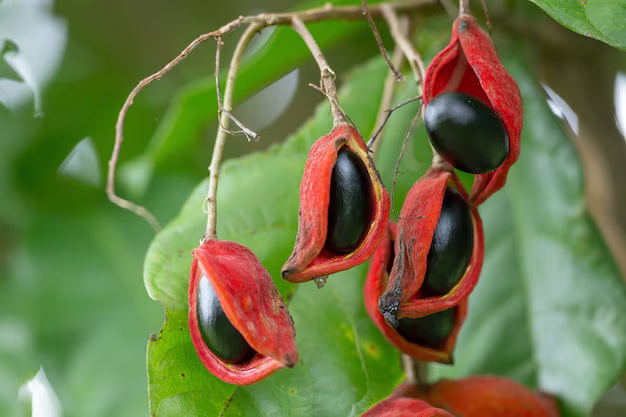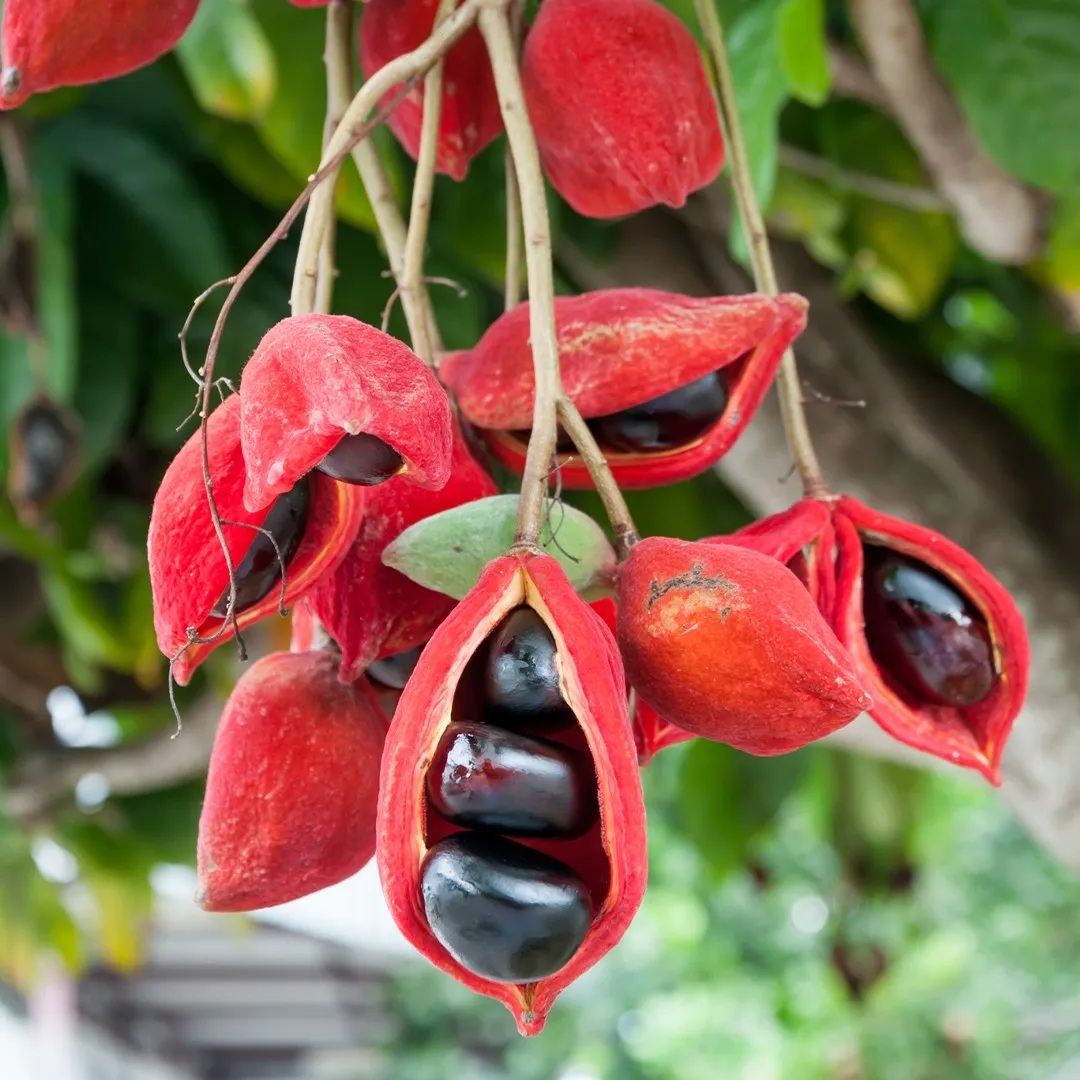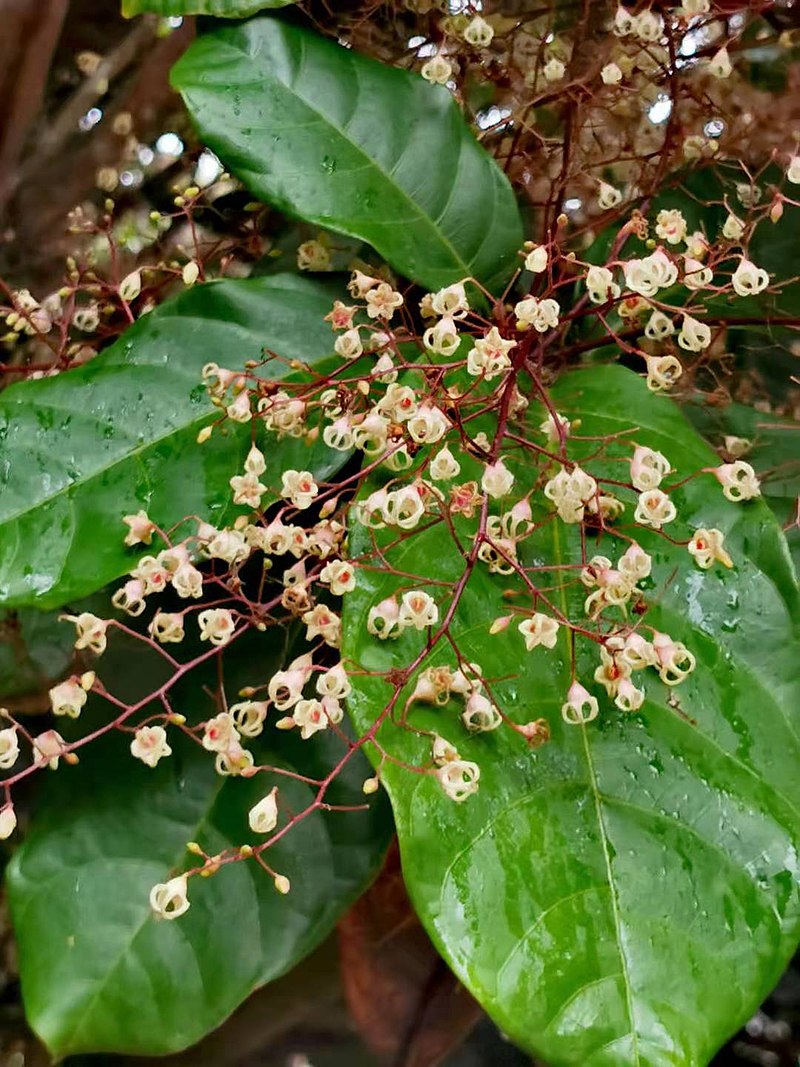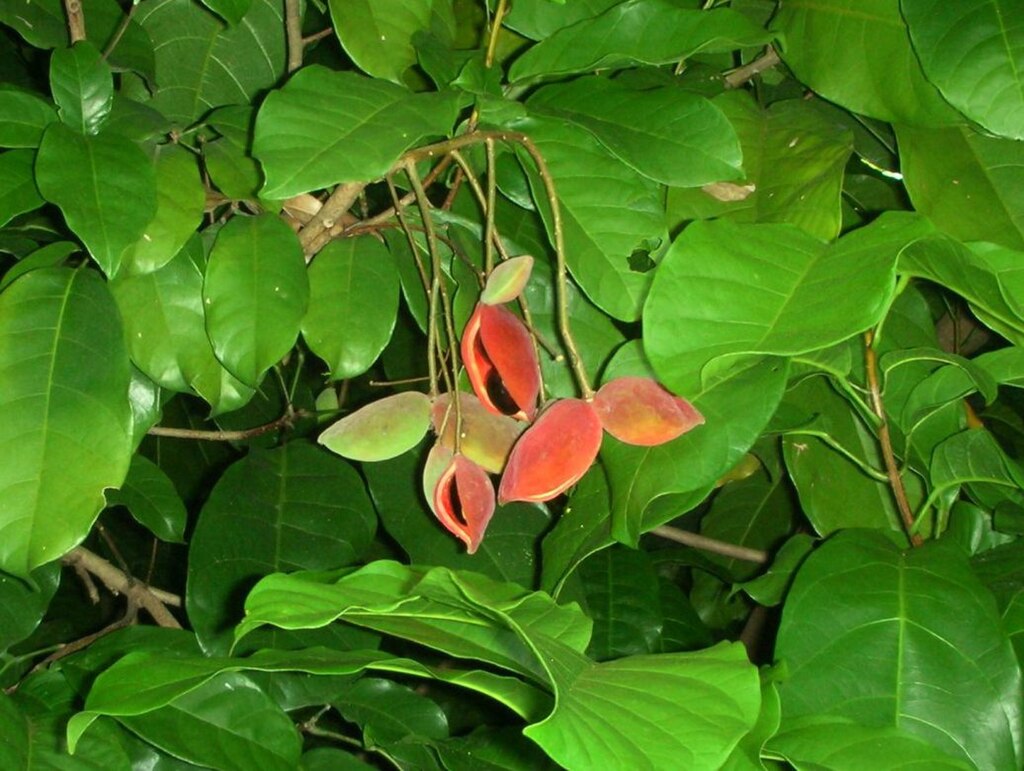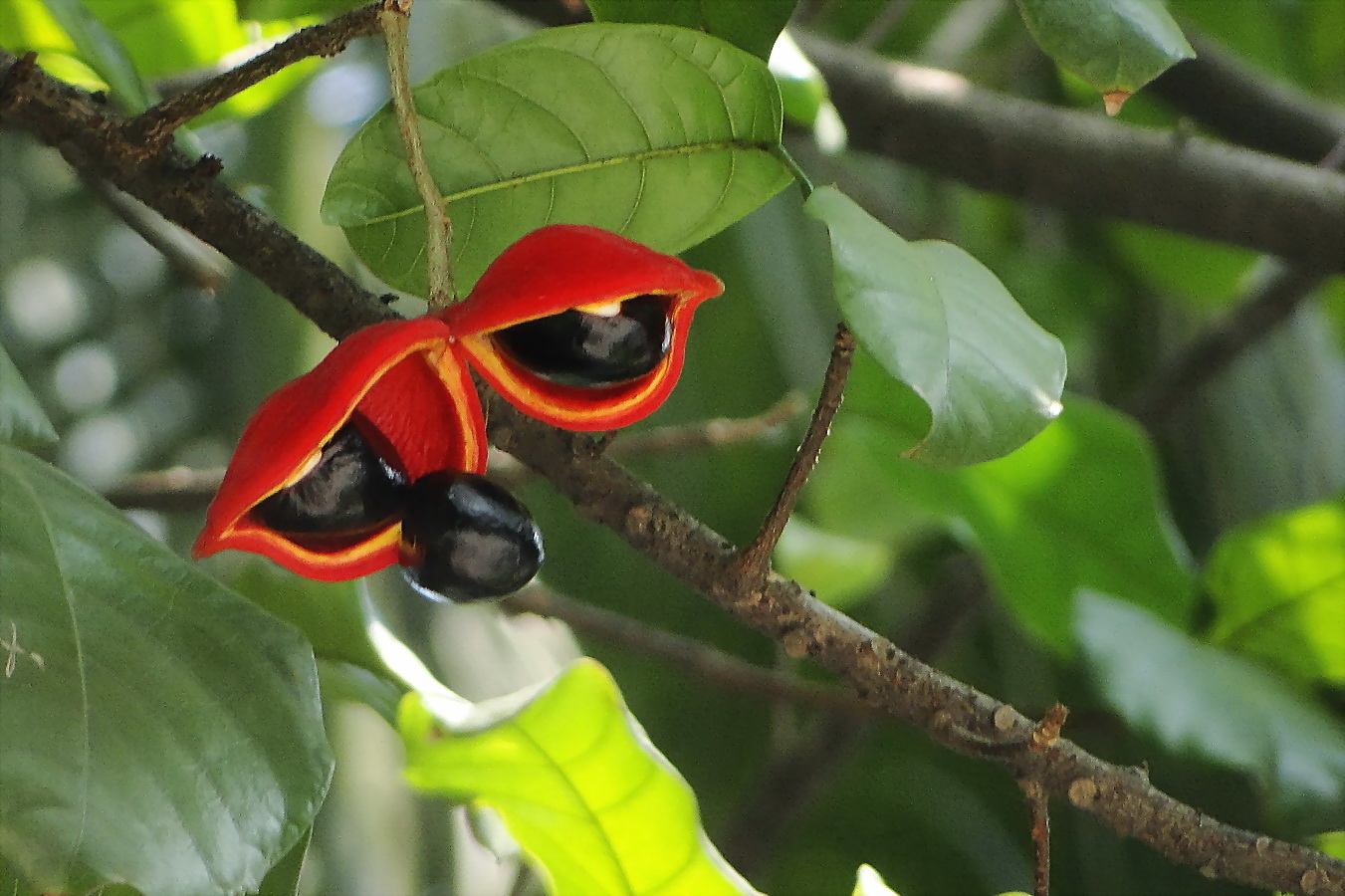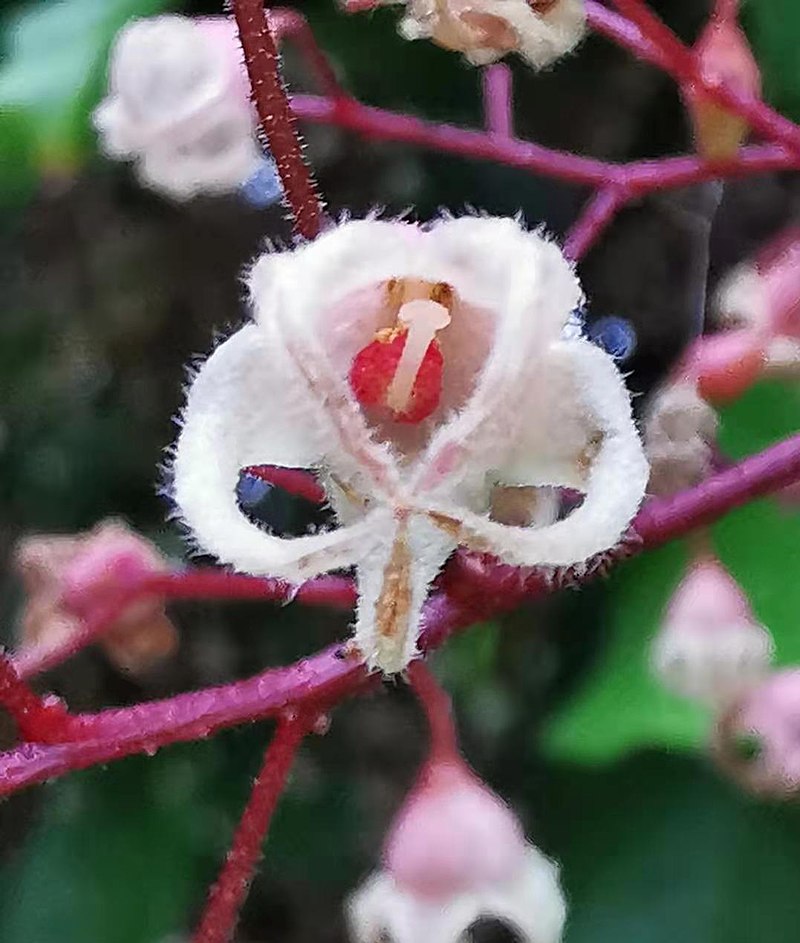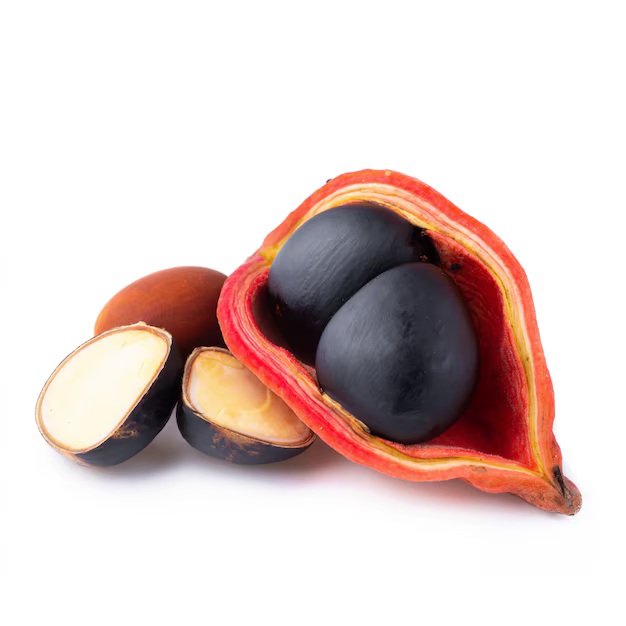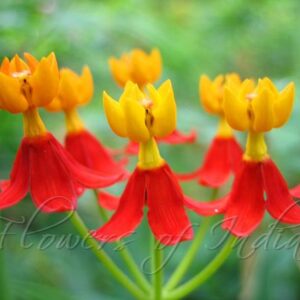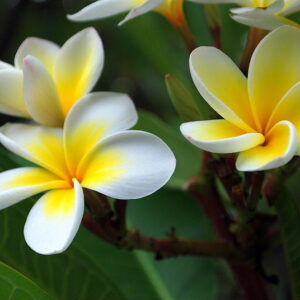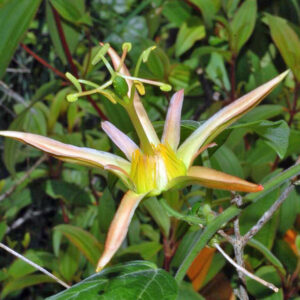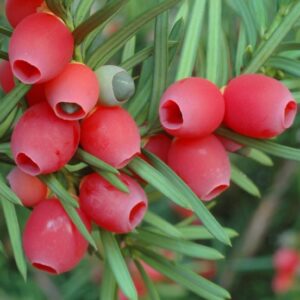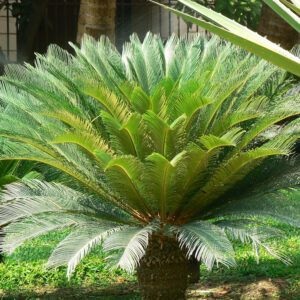توضیحات
Sterculia monosperma, also known as Chinese chestnut, seven sisters’ fruit, and phoenix eye fruit, is a deciduous tropical nut-bearing tree of genus Sterculia
Its origin is southern China (Guangdong, Guangxi and Yunnan) and Taiwan, but it is now a common cultivated tree in northern Thailand, northern Vietnam, mountainous areas of Malaysia and Indonesia, as well as northern Laos and Shan State in Burma
The ripe nuts are edible. They may be eaten plain, roasted, boiled with water and salt or also may be used to prepare dishes, such as sauteed with chicken
In China these nuts are one of the traditional foods of the Qixi Festival, the ‘night of the seven’, also known as the ‘anniversary of the seventh sister’. Qixi is celebrated on the seventh day of the seventh lunar month
The pods containing the nuts have a striking red color when ripe and the nuts are much darker —their husk or pericarpus is almost black— and smaller than the common chestnuts of genus Castanea. The pellicle is brown and smooth and the fruit is yellowish in color
استرکولیا چشم ققنوس گونه ای درخت از خانواده ختمی و از جنس استرکولیا است
درختی با میوه های قرمز و یک بذر درشت مشکی رنگ. گرچه میوه ها گوشت ندارند و میوه فقط غلافی چوبی است و بذرهای داخل آن است
در مناطق استوایی شرق آسیا همین میوه ها برداشت شده و دانه های آن به صورت پخته یا برشته شده خورده میشود
مصرف خوراکی آن به صورت تجاری رواج ندارد و فقط مصارف محلی در کشورهای استوایی دارد
دانه های رسیده در صورت برشته شدن طعمی شبیه خشکبار (بادام و پسته) دارند و بسیار خوشمزه است
همچنین روغن آن قابل مقایسه با روغن آفتابگردان، روغن سویا، و روغن هسته انگور است
